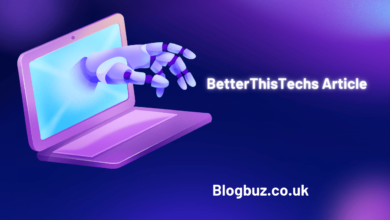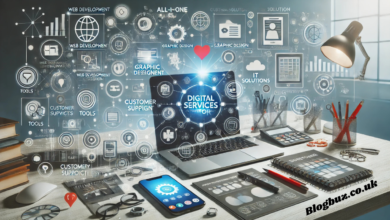Resource Monitors Used in Breaches: An In-Depth Analysis

In the complex cybersecurity landscape, the tools we use to safeguard our systems can sometimes become vulnerabilities. One such tool is the resource monitor, a vital component in managing system performance and a potential target or unwitting participant in security breaches. In this piece, we’ll examine the function of resource monitors in breaches, understand how they can be exploited, and discuss best practices to protect these critical tools.
What Are Resource Monitors?
Resource monitors are software applications designed to track and manage the usage of various system resources, including CPU usage, memory consumption, disk space, network bandwidth, and more. By providing real-time data on these metrics, resource monitors help IT administrators maintain optimal system performance, identify bottlenecks, and predict future resource needs.
Types of Resource Monitors
- System Performance Monitors: These tools focus on the overall health of a system, tracking CPU load, memory usage, and other critical metrics. Examples include Nagios, SolarWinds, and Datadog.
- Network Monitors: These tools analyze network traffic. In this piece, we’ll examine the function of threat. Popular network monitoring tools include Wireshark, PRTG Network Monitor, and NetFlow Analyzer.
- Application Performance Monitors (APM): APMs focus on the performance of specific applications, providing insights into how healthy software is running. Tools like Dynatrace and New Relic are well-known APMs.
- Systems for managing security information and events (SIEMs): SIEMs gather and examine data from various resource monitors and other sources to identify potential security breaches. Examples include Splunk, IBM QRadar, and LogRhythm.
How Resource Monitors Can Be Exploited in Breaches
By their very nature, resource monitors have access to critical system information. If compromised, they can become powerful tools in the hands of an attacker. Here are some ways resource monitors can be exploited:
Unauthorized Access
One of the most straightforward ways resource monitors can be exploited is through unauthorized access. If a hacker manages to access a resource monitor, they can manipulate the data it collects or disable it to cover their tracks. For example, if a hacker infiltrates a network and gains control of the network monitor, they could suppress alerts related to their activities, allowing them to move freely within the system.
Insider Threats
Insider threats pose a significant risk to resource monitors. Employees or contractors with legitimate access to these tools can misuse them to facilitate breaches. For instance, an insider could use a resource monitor to identify vulnerabilities within the system and exploit them or sell this information to external attackers.
Exploits in Monitoring Software
Like any software, resource monitors can have vulnerabilities that attackers can exploit. These flaws might allow attackers to access the monitor without authorization, inject malicious code, or disrupt the monitor’s operations. For example, a zero-day vulnerability in a widely used monitoring tool could be leveraged by cybercriminals to compromise thousands of systems before a patch is released.
Hijacking Resource Monitors
In some cases, attackers may hijack resource monitors to turn them into tools for further attacks. For example, an attacker could reconfigure a network monitor to route traffic through a malicious server, turning the monitor into a tool for data exfiltration.
Resource Monitors in Breaches
Understanding the potential dangers of resource monitors is best illustrated through real-world examples. Here are a few case studies where resource monitors played a role in security breaches:
The SolarWinds Breach
In December 2020, one of the most significant cybersecurity breaches in history came to light when it was discovered that attackers had compromised SolarWinds. This company provides network monitoring software to many institutions, including Fortune 500 firms and government agencies. The attackers inserted malicious code into a SolarWinds software update that was distributed to customers. Once installed, this code provided a backdoor into the affected systems, allowing the attackers to conduct espionage on an unprecedented scale.
The Equifax Breach
A significant credit reporting firm in the US, Equifax, had a significant data breach in 2017 that revealed the personal data of approximately 147 million people. The open-source web application was the source of the breach. Framework vulnerability that went unpatched for months. However, a contributing factor was the failure of the company’s resource monitors to detect the attackers’ activities. Despite repeated access to sensitive data, the attackers went undetected for over two months.
The Target Breach
A Target data breach in 2013 exposed over 40 million customer credit card details. The breach was initiated through the company’s HVAC system, which is connected to the same network as the point-of-sale (POS) terminals. The attackers used this access to deploy malware on the POS systems. Although Target’s resource monitors detected the unusual activity, the alerts were not acted upon in time, allowing the breach to continue.
Best Practices for Protecting Resource Monitors
Given the critical role resource monitors play in maintaining system security and performance, it is essential to protect them from exploitation. Here are some best practices for securing resource monitors:
Implement Strong Access Controls
Access to resource monitors should be tightly controlled. Only authorized personnel should have access, and The least privilege concept should guide granting permissions. Multi-factor authentication (MFA) should be enforced to reduce the risk of unauthorized access.
Regularly Update and Patch Monitoring Tools
Resource monitors must be updated with the latest patches and security updates, just like all software. Review the software regularly for known vulnerabilities and apply patches as soon as they are available. Automated patch management systems can ensure that updates are applied promptly.
Monitor the Monitors
Implement secondary monitoring to detect unusual activity within resource monitors themselves. This can include setting up alerts for configuration changes, unusual access patterns, or any signs of tampering. SIEM systems can be beneficial for this purpose, as they can correlate data from multiple sources to identify potential threats.
Conduct Regular Security Audits
Regular security audits can help identify vulnerabilities within resource monitoring systems. These audits should thoroughly review access logs, configuration settings, and software versions. Penetration testing helps determine potential weaknesses that attackers could exploit.
Employee Training and Awareness
Insider threats can be mitigated through regular employee training and awareness programs. Workers need to get training on the value of cybersecurity and the risks associated with the misuse of resource monitors. Additionally, a culture of accountability should be fostered, where employees feel responsible for protecting the organization’s systems.
The Future of Resource Monitors in Cybersecurity
Cybersecurity threats must always change, and so must the tools we use to defend against them. Resource monitors are becoming more sophisticated, incorporating artificial intelligence (AI) and machine learning (ML) to better detect and respond to potential threats. However, these advancements also bring new risks, as attackers may seek to exploit these technologies.
The Role of AI and ML in Resource Monitoring
AI and ML are being integrated into resource monitors to enhance their ability to detect anomalies and predict potential threats. These instruments can analyze massive amounts of data in real time, identifying patterns that may indicate a security breach. However, attackers also use AI and ML to develop more sophisticated attacks, leading to an ongoing arms race between defenders and attackers.
Emerging Threats and Countermeasures
As resource monitors become more advanced, attackers will likely develop new exploitation methods. For example, AI-driven attacks could target the algorithms used by resource monitors, manipulating them to generate false positives or negatives. Organizations must stay vigilant and continuously update security measures to counter these emerging threats.
Conclusion
Resource monitors are indispensable tools for managing system performance and ensuring cybersecurity. However, their critical role also makes them potential targets for exploitation. By understanding the risks associated with resource monitors and implementing best practices to protect them, organizations can reduce the likelihood of these tools being used in breaches. As technology evolves, so must our approach to securing resource monitors, ensuring they remain a robust line of defense in the ever-changing cybersecurity landscape.
You May Also Read: Navigating the Cybersecurity Landscape with Trendzguruji.me Cyber




